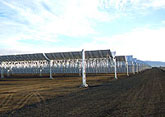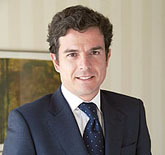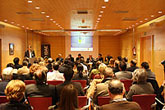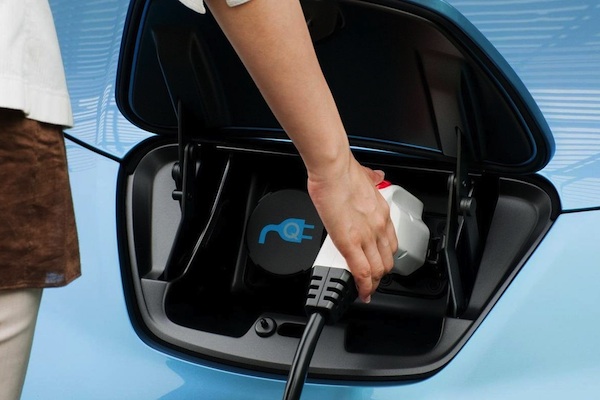Pedro Gonzalez, UNESA, points in this article the cold ironing: the use of electricity in the berthing of ships at ports to prevent pollution caused by having to keep their engines running. Obstacles, high power required and economic investment are not insurmountable.
In my last column published before summer I addressed electric mobility and its many advantages both in a local environment and in society as a whole. And in the same vein I would now like to focus on other developments that would contribute positively to achieving the climate change commitments acquired in Europe: the «Cold Ironing» or electricity supply to ships moored at the port.
The term «Cold Ironing» refers to the technique by which power to berthed vessels is provided, allowing stopping the engines and auxiliary generators. We can also find various names that match their acronyms in English, such as OPS (On-Shore Power Supply), AMPS (Alternative Maritime Power), SSE (Shore Side Electricity) or HVSC (High Voltage Shore Connection), the latter more specifically for the case in high voltage supply. I leave them here to start familiarizing with them.
The reason why this debate arises at the moment is related to several aspects that increasingly occupy the interest of society. The vast majority of cargo ships, bulk carriers, container ships, ferries and even cruises operate with their engines running when berthed in port, being these the only way to keep alive the electricity and cooling services needed on board.
The problem arises for several reasons: engines emit different types of pollutants (CO2, NOx, SOx or particulate) and generate noise pollution, which becomes important to the extent that cities are in the ports, and generate vibrations on the ships and in port areas. This however does not happen in recreational boats, as they have a connection to the electricity grid in the pontoons, similar to which each of us have in our homes, to meet those needs.
[Pullquote] The use of electricity during the stay in port of ships becomes a suitable option for the following reasons: first, there are no emissions at the point of consumption; second, the power supply does not generate noise and third, this neither causes vibration. [/ pullquote]
Thus, the use of electricity during the stay in port of ships becomes a suitable option for the following reasons: first, there are no emissions at the point of consumption; second, the power supply does not generate noise and third, neither does it cause vibration.
Why then the big boats or ships cannot have something like that? The answer lies in the high power required for this type of boat, so to date it was decided to use the auxiliary engines as a solution. The other reason is economic: the use of auxiliary engines avoids investment in the connection to the electricity grid and investment in ships to carry out the necessary adjustments as well as payment for electricity consumption during the stay in port .
However, we find that this situation could begin to gradually change, and we find examples of ports that choose to use electricity at the berth, mainly in the countries of northern Europe or the United States. There are also projects in Asia. The actions that are driving this change come mainly from the government side.
[Pullquote] National governments also have the commitment to combat climate change and we have set a EU target of 40% CO2 reduction by 2030 compared to 1990, an ambitious target to which emissions reduction in ports would dramatically contribute. [/ Pullquote]
The European Commission seems to be betting firmly and decisively for this option, as well as the last several directives published in recent years also envisages it. These aim to promote electrical use to reduce emissions and also establish a date for this to be carried out: 2025.
Meanwhile, national governments also have the commitment to combat climate change and we have set a EU target of 40% CO2 reduction by 2030 compared to 1990, an ambitious target to which emissions reduction in ports would dramatically contribute.
Finally, we must not forget the local governments, with a degree of rising sensitivity towards the negative effects of pollution and noise that occur in cities that begin to take action due to the concern for the welfare and comfort of its citizens.
Therefore, it seems that the progressive transformation of the ports will sooner or later be a fact. And so much so that the Spanish maritime industry is already on it. So it is all a question to remove barriers to this change.
Let´s consider first the power requirement. While small boats need similar powers to those we have in our homes -5 kW, for example, a cruise of 200 meters in length may require power of 10 MW, ie, 2,000 times more than a recreational boat. Today there is no network infrastructure near to ports standing these consumer needs.
So you have to plan these needs to provide the ports of the infrastructure required for the power supply to be present. Otherwise, we would be back to the same problem detected in the charging points in public spaces of the electric car: as there are no ships having electrical connection, the necessary infrastructures are not built and as there is no infrastructure vessels do not invest in connections.
With the deployed infrastructure, what would only be missing is to find ways to equate the cost of electricity to fuel consumption costs on large ships. There is for example a decision of the Council of the European Union in 2014 authorizing Sweden to apply a reduced rate to electricity directly provided to vessels berthed in port.
Therefore, we must find ways to facilitate this conversion.
All this requires changes, but if we can achieve this, we will certainly be taking another step in the right direction to meet the challenges we face in the transformation of society. The maritime industry in this country understands this and is already working on solutions.
Hopefully the effort will pay off as soon as possible.
Pedro González Director Regulatory and Economic Affairs of UNESA
Carlos Sánchez Criado
Publicista por la Universidad Complutense. Director comercial de publicaciones técnicas del sector de la energía durante doce años. Director de Energy News Events, S.L. desde 2012 difundiendo información en Energynews.es, movilidadelectrica.com e hidrogeno-verde.es. Y por supuesto, organizando eventos como VEM, la Feria del Vehículo Eléctrico de Madrid.


























